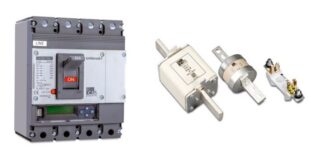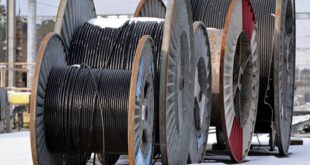Click to rate this post!
[Total: 3 Average: 4.7]
Earthing system design and calculations
Designing an earthing system involves ensuring safety by providing a low-resistance path for fault currents to flow into the ground, preventing electric shock hazards and protecting equipment. Here’s a general guide on how to calculate an earthing system:
1. Determine the Type of Earthing System:
- Common types include Plate Earthing, Rod Earthing, and Strip Earthing.
- The choice depends on soil resistivity, available space, and system requirements.
2. Soil Resistivity Measurement:
- Conduct a soil resistivity test at the site to determine the resistivity of the soil.
- Soil resistivity is a key factor influencing the design of the earthing system.
3. Current to be Earthed:
- Calculate the maximum fault current likely to flow into the earth during a fault.
- Consider the system’s fault levels and characteristics.
4. Select Appropriate Earthing Electrode:
- Based on soil resistivity and fault current, choose suitable electrodes (rods, plates, or strips).
- Larger electrodes are generally required for higher fault currents.
5. Resistance Calculation:
- Use the Wenner method or other appropriate methods to calculate the resistance of the chosen electrode.
- Adjust the electrode dimensions to achieve the desired resistance.
6. Number of Electrodes:
- Determine the number of electrodes required to meet the calculated resistance.
- Consider practical constraints and space availability.
7. Earthing Conductor Sizing:
- Size the earthing conductors based on the fault current and the duration for which the fault current must be cleared.
- Ensure the conductors can handle the mechanical and thermal stress during a fault.
8. Step and Touch Voltages:
- Assess step and touch voltages to ensure safety for personnel.
- Adjust the layout of electrodes if needed to meet safety requirements.
9. Mesh or Grid Design:
- For large facilities or high fault currents, design an earthing grid or mesh.
- Calculate the mesh/grid size to ensure low resistance.
10. Compliance with Standards:
- Ensure the earthing system complies with relevant standards and codes, such as IEEE 80 or IEC 60364.
- Consider local regulations and requirements.
11. Monitoring and Maintenance:
- Implement a monitoring system to regularly check the resistance of the earthing system.
- Perform maintenance as needed, such as cleaning electrodes or replacing damaged conductors.
Note: Earthing system design can be complex and may require the involvement of a qualified electrical engineer. The specific steps and calculations can vary based on local regulations, standards, and the characteristics of the electrical system. Always consult with a professional for a detailed and site-specific earthing system design.
 Ontrose industrial corporation Inc. Engineering and supply of industrial projects
Ontrose industrial corporation Inc. Engineering and supply of industrial projects




